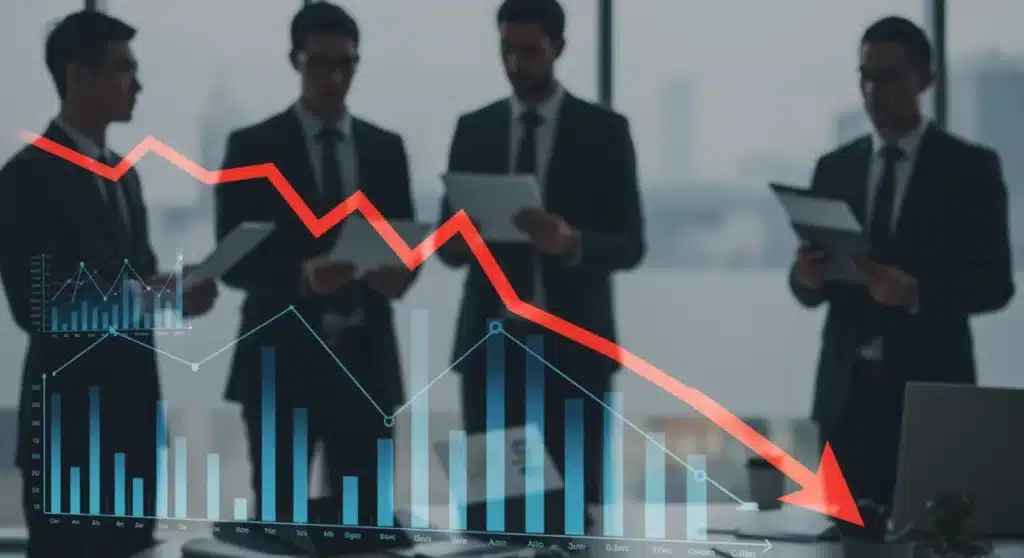Reducing Customer Acquisition Cost by 18%: A 2025 Framework

US businesses are now actively seeking proven strategies to reduce customer acquisition costs. A new 2025 framework aims for an 18% reduction, offering clear pathways to enhance profitability and financial stability. This guide explores key components and actionable insights for immediate implementation.
As of late, businesses across the United States are intensely focused on strategies for reducing customer acquisition cost by 18%: a 2025 framework for US businesses (financial impact), a crucial metric directly influencing profitability and sustainable growth. This immediate focus reflects the current economic climate, where efficiency and strategic spending are paramount for competitive advantage.
Understanding the Urgency: Why CAC Reduction Matters Now
The urgency surrounding customer acquisition cost (CAC) reduction in US businesses is more pronounced than ever. Recent market shifts, including fluctuating consumer spending and increased competition, are driving companies to scrutinize every dollar spent on attracting new clients. This isn’t merely about cutting costs; it’s about optimizing investment for maximum return.
Businesses are currently navigating a landscape where traditional marketing channels are becoming more expensive, and consumer attention is more fragmented. This necessitates a strategic re-evaluation of how new customers are acquired, prioritizing methods that offer higher efficiency and demonstrable financial impact. The goal is to ensure that growth is not just achieved, but achieved profitably.
Analyzing Current CAC Trends
Recent data indicates a steady rise in average CAC across various industries, pushing businesses to seek innovative solutions. This upward trend is attributed to several factors, including the saturation of digital advertising platforms and the increasing sophistication required for effective targeting. Companies are finding that what worked last year may not be as effective today, necessitating agile and data-driven approaches.
- Increased competition in digital ad auctions.
- Higher consumer expectations for personalized experiences.
- Fragmented media landscape requiring multi-channel strategies.
- Rising costs of data and analytics tools.
Leveraging Data Analytics for Precision Targeting
One of the foundational pillars of reducing customer acquisition cost by 18%: a 2025 framework for US businesses (financial impact) involves the sophisticated use of data analytics. By harnessing granular customer data, businesses can move beyond broad demographic targeting to pinpoint ideal customer segments with unprecedented accuracy. This precision minimizes wasted ad spend and maximizes conversion rates, directly impacting CAC.
The ability to analyze customer behavior, preferences, and purchase histories allows companies to craft highly relevant marketing messages. These tailored communications resonate more deeply with potential customers, leading to higher engagement and a more efficient sales funnel. Investing in robust analytics platforms is no longer a luxury but a necessity for competitive advantage.
Implementing Predictive Analytics
Predictive analytics, as reported by industry leaders, is emerging as a game-changer. By forecasting future customer behavior, businesses can proactively allocate resources to the most promising leads. This forward-looking approach helps to identify high-value customers earlier in the acquisition cycle, reducing the overall effort and cost associated with conversion.
- Identifying high-propensity-to-buy segments.
- Optimizing ad spend based on predicted ROI.
- Personalizing customer journeys before initial contact.
- Minimizing churn by anticipating customer needs.
Optimizing the Customer Journey for Efficiency
A critical component of the 2025 framework for reducing customer acquisition cost by 18%: a 2025 framework for US businesses (financial impact) is a meticulous optimization of the entire customer journey. Every touchpoint, from initial awareness to post-purchase engagement, presents an opportunity to streamline processes and enhance user experience. A frictionless journey reduces friction, improves conversion rates, and ultimately lowers the cost of acquiring each new customer.
Businesses are currently focusing on mapping out their customer journeys in detail, identifying pain points and areas of inefficiency. By removing unnecessary steps, clarifying messaging, and providing intuitive pathways to conversion, companies can significantly improve the effectiveness of their acquisition efforts. This holistic approach ensures that potential customers are guided smoothly towards becoming loyal patrons.

Streamlining Onboarding Processes
As reported by several tech firms, a key area for optimization is the onboarding process. A complex or confusing onboarding experience can lead to high drop-off rates, effectively increasing the cost per acquired customer. Simplifying these initial interactions, often through automation and clear instructional content, can dramatically improve conversion success.
- Implementing guided tours for new users.
- Automating welcome email sequences.
- Providing clear, concise product documentation.
- Offering immediate support options.
Content Marketing and SEO as CAC Reduction Drivers
Content marketing and robust SEO strategies are increasingly recognized as powerful drivers for reducing customer acquisition cost by 18%: a 2025 framework for US businesses (financial impact). By creating valuable, relevant, and consistent content, businesses can attract organic traffic, build authority, and nurture leads without the recurring costs associated with paid advertising. This inbound approach yields long-term benefits and a lower cost per lead over time.
A well-executed content strategy positions a business as an industry leader, fostering trust and credibility with potential customers. When consumers actively seek out information and find it on a company’s owned channels, the intent is higher, and the path to conversion is often shorter and less expensive. This organic pull reduces reliance on costly outbound methods.
Investing in Evergreen Content
Focusing on evergreen content – content that remains relevant and valuable over time – is a particularly effective tactic. These assets continue to attract organic traffic and generate leads for months or even years after publication, providing a sustained return on investment. Examples include comprehensive guides, how-to articles, and foundational industry insights.
- Creating in-depth blog posts and articles.
- Developing informative whitepapers and e-books.
- Producing educational video tutorials.
- Optimizing all content for specific long-tail keywords.
Retention Strategies: The Indirect CAC Reducer
While often seen as a post-acquisition activity, effective customer retention plays a crucial, albeit indirect, role in reducing customer acquisition cost by 18%: a 2025 framework for US businesses (financial impact). By extending the lifetime value (LTV) of existing customers, businesses reduce the pressure to constantly acquire new ones simply to maintain growth. Loyal customers also become advocates, generating organic referrals that come at little to no cost.
Companies are now prioritizing retention efforts as a direct strategy for financial efficiency. A higher retention rate means that the initial investment made to acquire a customer pays off over a longer period, improving the overall return on marketing spend. This shift in focus is essential for building sustainable business models.
Building Customer Loyalty Programs
Developing robust customer loyalty programs is a key strategy for enhancing retention. These programs, which can include tiered rewards, exclusive access, or personalized offers, incentivize repeat business and strengthen the bond between the customer and the brand. As reported by leading retail analysts, such programs significantly increase LTV and reduce churn.
- Implementing point-based reward systems.
- Offering exclusive discounts to loyal customers.
- Creating VIP communities or early access to products.
- Soliciting and acting on customer feedback for continuous improvement.
Strategic Partnerships and Referral Programs
Strategic partnerships and well-structured referral programs are emerging as highly effective, low-cost avenues for reducing customer acquisition cost by 18%: a 2025 framework for US businesses (financial impact). By leveraging the networks of complementary businesses or incentivizing existing customers to spread the word, companies can tap into new audiences with inherent trust, significantly lowering the barrier to conversion and the associated costs.
These channels often bring in higher-quality leads, as referrals come with a built-in level of endorsement. This translates to higher conversion rates and a more efficient sales cycle compared to cold outreach. Businesses are actively seeking out mutually beneficial partnerships and designing compelling referral incentives.
Implementing Automated Referral Systems
Automated referral systems, as highlighted by marketing technology firms, streamline the process of encouraging and tracking referrals. These systems make it easy for satisfied customers to share their positive experiences and for new customers to be attributed correctly, ensuring that both parties receive their incentives. This automation reduces administrative overhead and scales the program effortlessly.
- Providing easy-to-share referral links.
- Offering clear incentives for both referrer and referred.
- Tracking referral performance with analytics.
- Promoting the referral program across all customer touchpoints.
| Key Strategy | Brief Description |
|---|---|
| Data Analytics & AI | Utilizing predictive analytics for hyper-targeted campaigns and optimized ad spend to reach high-value customers efficiently. |
| Customer Journey Optimization | Streamlining every touchpoint from awareness to conversion, reducing friction and improving conversion rates for lower CAC. |
| Content Marketing & SEO | Attracting organic traffic and nurturing leads through valuable evergreen content, building authority and reducing reliance on paid ads. |
| Retention & Referrals | Extending customer lifetime value through loyalty programs and leveraging current customers for cost-effective, high-quality referrals. |
Frequently Asked Questions About CAC Reduction
The main objective is to help US businesses achieve an 18% reduction in customer acquisition cost by 2025. This framework focuses on implementing data-driven strategies and optimizing customer journeys to enhance overall financial impact and sustainable growth.
Data analytics, especially predictive analytics, enables businesses to identify and target high-value customer segments more precisely. This reduces wasted marketing spend on less promising leads, allowing for more efficient resource allocation and higher conversion rates at a lower cost.
Optimizing the customer journey streamlines every interaction a potential customer has with a brand. By removing friction points and enhancing user experience from awareness to conversion, businesses significantly improve efficiency and reduce the effort and cost required to onboard a new customer.
Yes, content marketing and SEO are highly effective. By creating valuable, evergreen content, businesses attract organic traffic and nurture leads without constant paid advertising. This inbound strategy builds brand authority and trust, leading to lower cost-per-lead over the long term.
Retention strategies indirectly reduce CAC by increasing customer lifetime value, lessening the need for constant new acquisitions. Referral programs directly lower CAC by leveraging existing customer networks, bringing in high-quality leads at minimal cost through trusted recommendations.
What Happens Next
The aggressive push for reducing Customer Acquisition cost by 18%: a 2025 framework for US businesses (financial impact) signals a deeper transformation in how marketing budgets will be allocated and measured. Instead of simply spending more to win new customers, companies will shift toward smarter Customer Acquisition strategies rooted in data precision, lifecycle value forecasting, and automation-driven targeting. This new direction positions Customer Acquisition not just as a sales function but as a core financial performance metric tied directly to profitability.
Over the next cycle, we expect to see rapid adoption of AI-enhanced martech stacks that optimize Customer Acquisition in real time, alongside new frameworks that blend retention and acquisition into a single efficiency model. Businesses that proactively refine their Customer Acquisition playbooks will gain a measurable competitive edge, especially those leveraging performance benchmarks and insights from customer acquisition efficiency guides like https://www.smartbugmedia.com/blog/how-to-reduce-customer-acquisition-cost to fine-tune their approach.
Ultimately, this evolution is about more than lowering expenses—it’s about engineering sustainable Customer Acquisition systems that scale intelligently, adapt to shifting consumer behavior, and strengthen long-term market positioning. Companies that embrace this transformation now will be better prepared to thrive in a landscape where every dollar spent on Customer Acquisition must deliver accountable growth.





